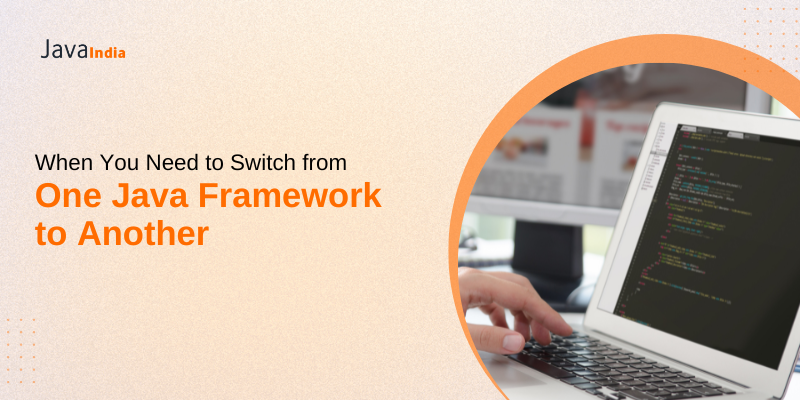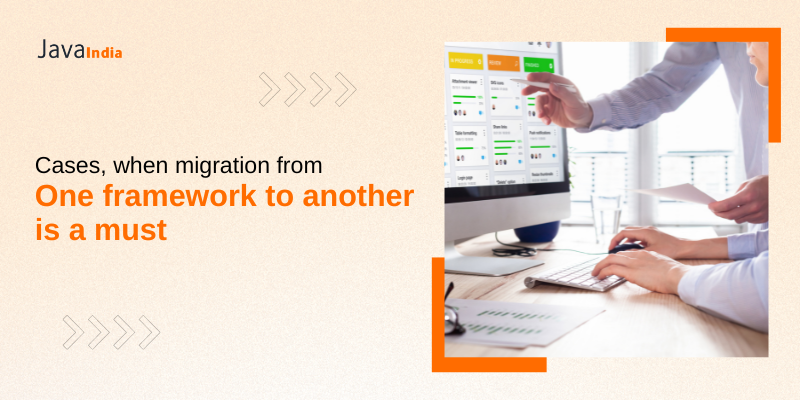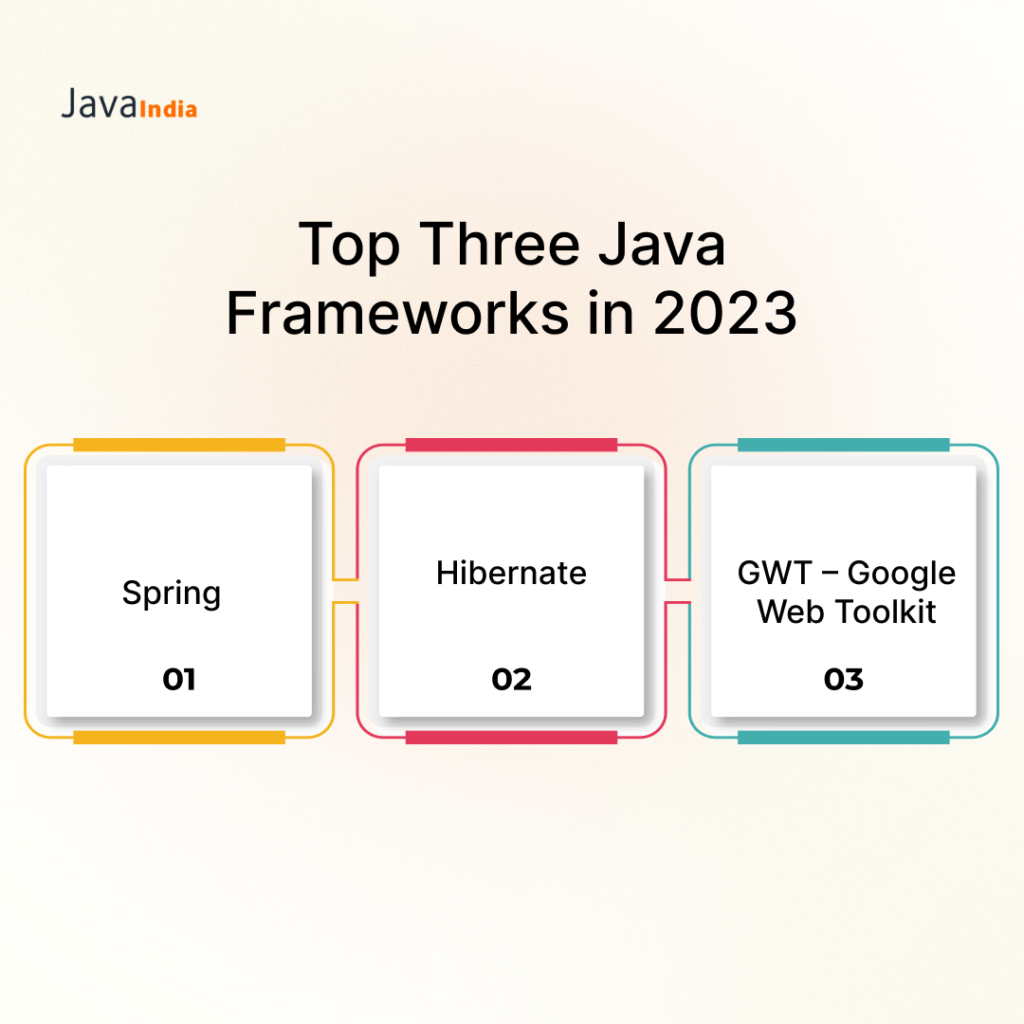
A Guide to the Best Java Frameworks for Web Development
A list of pre-written code, that assists Java developers to build web applications, is called a Framework. These pre-written codes can also be used later whenever requires. The reuse feature of these prewritten codes leverages developers to create web apps without having the headache of writing codes from scratch. Java frameworks for web development are all related to Java programming language. This is required to develop for building software applications and different other Java programs.
There are different components of the Java framework that include predefined functions and classes. Developers use these components to manage devices, provide inputs, and process to keep the interaction clear with system software. There are a variety of Java frameworks for which well-versed programmers are required who can use these frameworks to build web applications.

When You Need to Switch from One Java Framework to Another
Practical Scenario: It is a fact that when you are switching to a new technology, you will have to bear the extra cost by paying skilled professionals and time as well. Therefore, you need to think about switching only when you analyze the probable cost of changing the framework and how you are going get the benefit out of it.
Switching is good sometimes but it takes time. Especially when your programmer does not have the proper skill to use the framework you are planning to change. In this case, getting learning about the new framework will consume time. In this scenario, if you hire Java developers who have proper expertise in the new framework, the task of switching to a new framework becomes easier.
It will be beneficial for you if you need to maintain an old platform while building a new one. You may find more details in our guide for offshore Java developers. It will take time to re-implement current functionalities in the case of a total transfer to a new platform. Of course, you’ll spend this money on things you already own. The disadvantage is that new feature delivery will have to wait.
Is it worthwhile to forego potential earnings by enhancing such stacks? The resources used to replace it will be swiftly recovered because the new framework may be far more effective at development.

Cases, when migration from one framework to another is a must
Your project may grow in size, necessitating additional time to add or upgrade a new feature. It’s time to abandon your framework when new feature implementation times become intolerable. One of the most typical situations is this one. You must comprehend when digging into transformations clearly before we move ahead. Three typical scenarios exist where movement modifications are rational.
Scaling
Scaling is a natural step in the development of any product. It is designed for a particular degree of load in the form of traffic volume and web page loads at the first stage of entering the market or implementing a solution in an organization. The initial stack might not be able to support the load as the product becomes more widely used and more popular.
Usually, the project architect is in charge of ensuring a smooth changeover between frameworks. If you don’t already have an architect on staff and don’t intend to hire one on a long-term basis. You can hire from a vendor and use Architect as a Service.
Company policy change
Priority is frequently given to free software while selecting a framework, which has its own specialized benefits. Major technological businesses become interested in this product (framework) as it gains popularity among specialists. As a result, the item is purchased and sales begin. One, or the primary, essential element you previously selected for your stack, alters negatively. As a result, switching to an open-source framework with comparable features becomes necessary.
Legacy technology
Technology is a moving target. Many times, tech directors are unsure about the proper framework to use while replacing or maintaining outdated software. It’s difficult to convince people to use outdated technology, though.
It is plainly a dead end to continue using and supporting outdated software when there are virtually no experts left on the market who can use it. Changing to a new framework from the newest generation is unquestionably the best course of action. It is important to keep an eye on the pulse because the only constant in technological growth is perpetual change.

Top Three Java Frameworks in 2023
If you are planning to switch to a new framework, the following top three frameworks will fit perfectly to the web development project.
- Spring
Spring is one of the most well-known names in Java web development services. The well-known and most widely used Java framework, Spring, has a set of standard standards that cover all the fundamental requirements for creating apps. It is an enterprise application framework that is open-source.
Businesses should choose “Spring” for app development for a variety of reasons. A well-liked Java EE framework called Spring can be activated without the aid of an application or web server and is both robust and lightweight. According to the developers, the Spring framework makes Java simple, modern, efficient, reactive, and cloud-ready.
- Hibernate
Hibernate is another significant name on the list of Java frameworks for web development. Because of its stability and communication, Hibernate is typically preferred by developers. It is an open-source framework that is free. The main configuration file for Hibernate is hibernate.cfg.xml. It contains details on how Java classes and database configuration are mapped.
A dependable object-relational mapping technology called Hibernate enables Java to interact with relational database management systems more successfully. Hibernate is not a full-stack framework, but it also cannot be compared to a conventional database.
- GWT – Google Web Toolkit
GWT is an open-source tool created by Google for creating front-end Java web development services or building web applictaions. It includes well-organized documentation that makes it easier for developers to grasp. It is a straightforward but effective tool, as you would expect from a Google product.
Even though it is intended to generate client-side apps, it can now also produce server-side web applications. The quality of the application developed on it is unaffected by its simplicity. This toolkit can transform Java code into unique JavaScript code that is based on a browser.
GWT was used in the development of many Google products, including Adsense, Google Wallet, etc. Additionally, GWT makes it simple to leverage the Google API.
Concluding Thoughts
These are the Java frameworks for web development discussed above and the details of each will guide you to choose your preferred one. Also, it is important to know when should you upgrade to another framework. Because sometimes upgrading the framework is good for development but you will have to bear extra costs for acquiring a new framework and look for skilled Java developers.
FAQs
Q. What Java framework is used for web development?
Google Web Toolkit (GWT), the newest framework for Java, is frequently used by Java developers to create web applications. It offers an environment for creating client-side programs, XML parsing, and HTML validation.
Q. What Java frameworks should I learn?
The most crucial Java frameworks are Spring, Hibernate, Spring Boot, Spring Securit, and Spring Cloud. Greetings, Java developers. You’ve come to the right place if you’re wondering which frameworks you should master to become a fully-fledged developer.
Q. Is Spring faster than Django?
Given that Spring Boot’s code is written in Java, it runs more quickly than Django. The ranking of a website is impacted by how quickly a webpage loads in Google.

